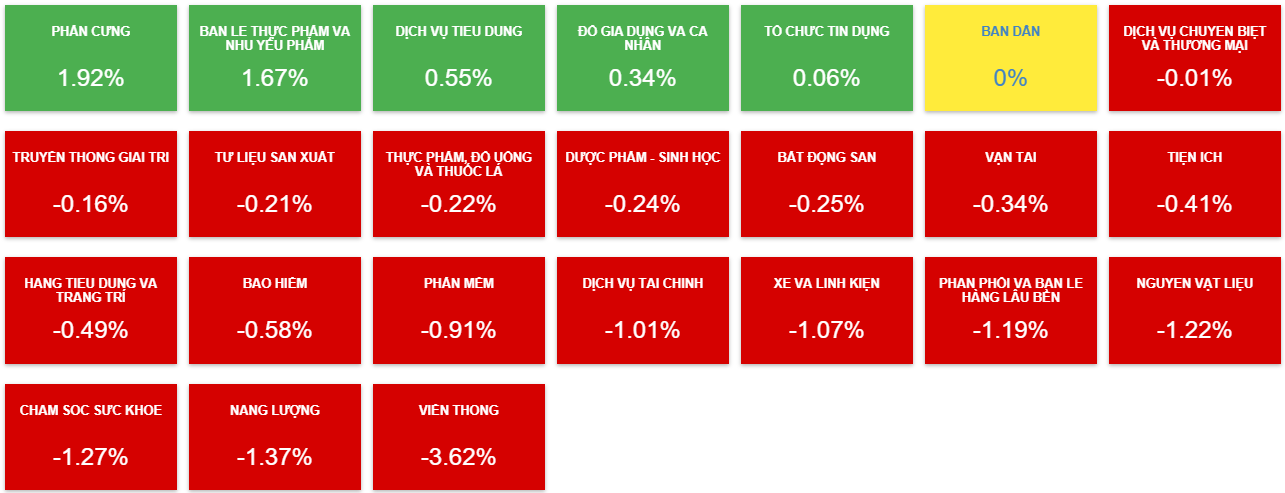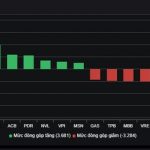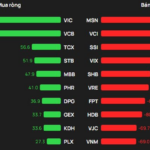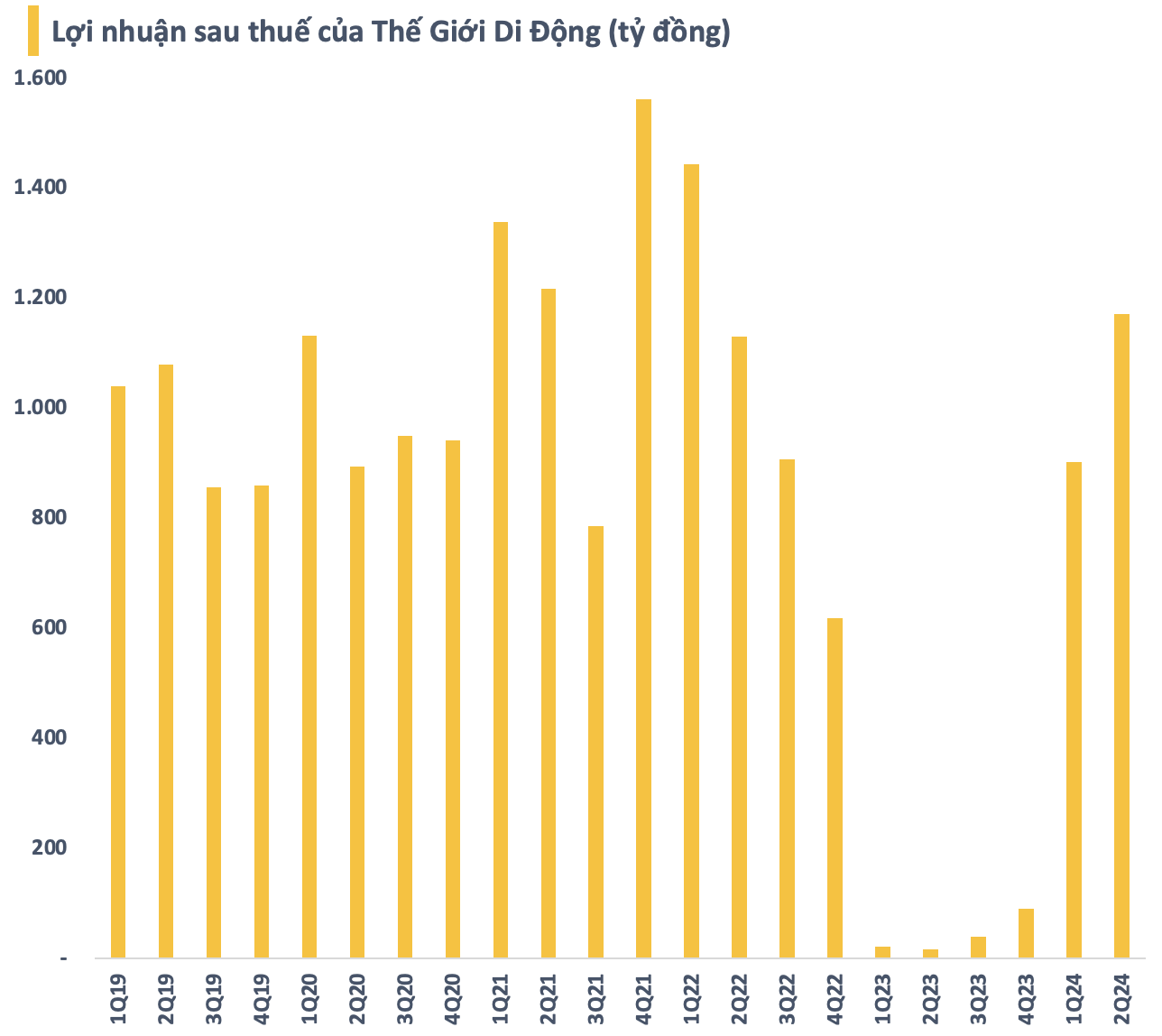The VN-Index struggled to stay afloat and would have dipped further if not for the strong support of two key stocks, VHM and VCB. Specifically, these two stocks together led the market in terms of point contribution, with VHM adding 0.92 points and VCB contributing over 0.82 points, totaling 1.74 points, while the top 10 positive-impact stocks brought in only 2.68 points.
In addition to VCB, the above-mentioned top 10 also included several other banking stocks, namely HDB, CTG, VPB, BID, LPB, and VIB.
Morning Session: Red Dominates Across Most Sectors
The VN-Index experienced a back-and-forth morning session with multiple dips and recoveries, amid weak liquidity. At the end of the morning session, the VN-Index fell 4.46 points to 1,225.90, the HNX decreased by 1.32 points to 228.36, and the UPCoM dropped by 0.39 points to 92.26.
Only five sectors managed to stay in the green by the end of the morning session, with two sectors, hardware and food & essentials retail, gaining over 1%. Meanwhile, a staggering 18 sectors witnessed losses, led by telecommunications, which plunged 3.62% due to pressure from VGI’s 4.28% drop and FOX’s 1.83% decline. This was followed by a string of sectors that fell over 1%, including energy, healthcare, and materials.
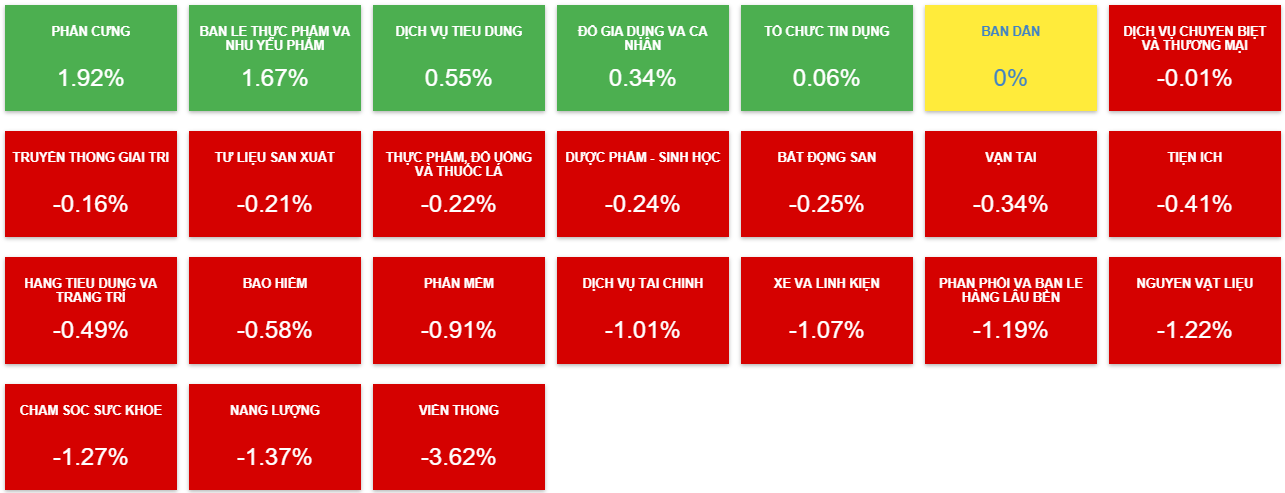 Source: VietstockFinance
|
Foreign investors also traded sparingly during the morning session, with a buy value of just over 448 billion VND and a sell value of nearly 427 billion VND, resulting in a net buy of nearly 22 billion VND. If they continue to net buy today, it will mark the fifth consecutive net buying session, something that hasn’t happened in a long while.
A closer look at today’s foreign trading activities reveals that VNM, FPT, and HDB stood out with net buys of 46 billion VND, 39 billion VND, and 21 billion VND, respectively. On the other hand, VHM, TCB, and MWG faced the strongest net selling, with values of 42 billion VND, 33 billion VND, and 24 billion VND, respectively.
10:35 am: Challenges Persist, Liquidity Wanes
The market continued to face headwinds as red dominated all three exchanges, with the VN-Index dipping below 4 points at one point. Liquidity significantly weakened.
As of 10:30 am, the VN-Index fell by 3.46 points to 1,226.90, the HNX decreased by 0.79 points to 228.89, and the UPCoM slipped by 0.08 points to 92.57.
The sea of red engulfed 369 tickers, with 6 floor prices, while 168 tickers were in the green and 22 hit the ceiling prices. Sector-wise, most sectors were also in the red, led by telecommunications, which fell 2.84% due to pressure from VGI, FOX, and others, and energy, which dropped 1.06% under pressure from PVS, PVD, BSR, and the like.
In the top 10 stocks negatively impacting the VN-Index, GVR took the lead, shaving off 0.5 points, followed by heavyweights like MWG, FPT, TCB, and MSN. Conversely, HDB stood alone in its effort to buoy the index.
The trading value on all three exchanges barely surpassed 3,498 billion VND, a noticeable drop from the previous session and the 5-session average. However, this cautious sentiment is understandable given today’s futures expiry, which often brings about unpredictable fluctuations.
Market Open: Swimming Against the Global Tide
Contrary to expectations of positive momentum in line with global stock markets, the VN-Index started the day with a slight decline. Notably, today marks the futures expiry, which could bring about significant volatility.
As of 9:30 am, the VN-Index had dropped by 2.08 points to 1,228.28, the HNX fell by 0.18 points to 229.50, while the UPCoM rose by 0.2 points to 92.85. Liquidity was lower than the previous session and the 5-session average, indicating a degree of investor caution.
HDB stood out in early trading, attracting notable buying interest and climbing over 2%.
The performance of Vietnam’s stock market contrasted with the predictions of many investors who anticipated a positive correlation with the upbeat global markets. Notably, on the other side of the globe, major US indices like the Dow Jones, S&P 500, and Nasdaq Composite closed in positive territory, buoyed by encouraging inflation data.
The US Labor Department’s Bureau of Labor Statistics reported that the consumer price index (CPI) for July rose 2.9% year-over-year, down from 3% in June and marking the lowest level since March 2021. On a monthly basis, CPI increased by 0.2%. Economists surveyed by Dow Jones had forecast a 0.2% rise in CPI compared to the previous month and a 3% increase from the previous year.
Core inflation, which excludes food and energy prices, rose 0.2% in July, in line with expectations.
This report came a day after wholesale inflation data, which came in below expectations, boosted stocks.

